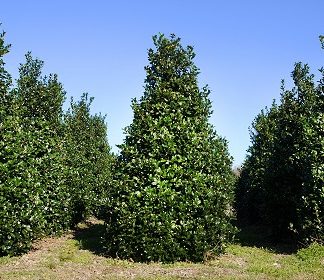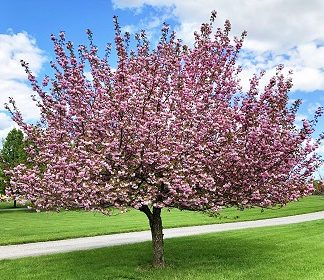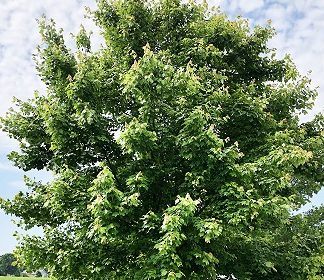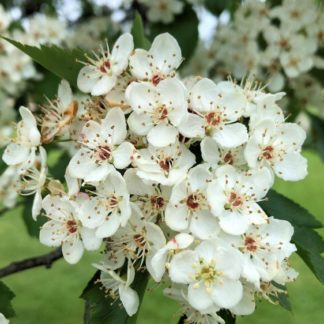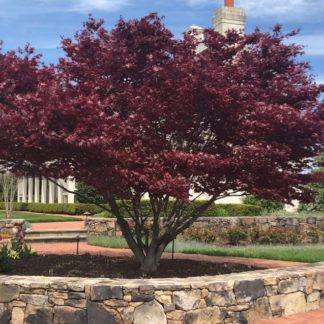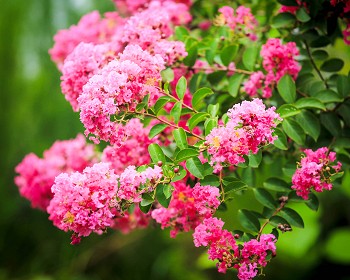Trees
We admit it — we’re tree huggers and will never change! Planting a tree is a link to the future. In a way, planting a tree is like giving a gift to the next generation, and we are all for it.
There is nothing quite like the majesty of a spectacular tree, and these natural giants set the tone for the rest of your outdoor setting. Whether you are starting a project from scratch or want to add some dramatic features or height, trees are go-to plants you can enjoy for decades.
Visually, trees provide height and structure in your outdoor spaces. They can create privacy and individual outdoor alcoves within more extensive settings. If you are looking for tree plants for sale, you are in the right place. Stadler Nurseries stocks many types of trees, so whether you want a classic favorite or something unusual, our extensive selection has something for everyone.
More About Trees
Trees are the most eye-catching natural features on any property and form the backdrop for any season. When choosing trees for your next landscaping project or as features in your yard, consider the characteristics you want. These can include:
- Flowering trees: These trees bloom and provide flamboyant splashes of seasonal color.
- Foliage trees: Some varieties exhibit impressive, vibrant, textured foliage throughout the warmer seasons.
- Seasonal showstoppers: There are trees with lush green foliage that transform into golden hues at the start of autumn.
- Fruiting trees: Some trees produce fruit that ripens in fall, providing healthy homegrown food and color to your yard.
- Evergreen trees: These trees keep their foliage year-round, making them perfect for privacy screening. Evergreens also provide dabs of rich color during winter.
- Ornamental trees: Some tree shapes boast unusual patterned bark or foliage and offer year-round beauty and interest.
Many tree varieties combine several of these elements, while others, like the fast-growing Spartan juniper, retain their classic appearance throughout the year.
While exploring local tree nurseries, consider the following four points.
1. Plant With Purpose
One of the first considerations when selecting a tree is its function or purpose. While each yard is unique, some common reasons mentioned at local plant nurseries when customers are choosing trees include:
- Shade: Shade trees should be mindfully planted in places where they block harsh sun from areas you want to keep cool. For example, when planting a shade tree near your deck, position it so that it blocks the hot southern and western sun. That will enable you to enjoy cool outdoor dining throughout the hot summer months.
- Privacy: Evergreens make excellent screens. Consider grouping your trees rather than planting long rows of arborvitaes or cypresses for screening. Groups of evergreens, complemented with colorful shrubs, create a more visually appealing setting.
- Shelter: Planting needled evergreens, such as White pines or Norway spruces, on the northwest side of your home can help block icy winter winds and may even reduce your heating bill.
- Beauty: Flowering trees are visual delights and fill the air with delightful summer fragrance. Group several of the same tree species together to create small groves. This often makes a greater impact than single flowering specimens scattered around the landscape. While it is tremendous to have a long succession of bloom-time, several trees blooming at the same time can make an even greater impact.
- Accent: Accent trees have unusual shapes and should be positioned thoughtfully. These tree varieties beg to be the center of attention and often stand out as the focal point in landscaped beds. A single Weeping Cherry Snow Fountain looks lost planted in the middle of the yard, yet when surrounded by shrubs that accentuate its vibrant color and form, it transforms into the queen of the property. Large, majestic trees, such as Southern magnolias, are an exception and look beautiful when planted as stand-alone feature trees in large spaces.
If you only have a few trees or none at all, you may want to consider trees that provide shade and privacy first and then move on to adding ornamental or feature varieties.
2. Ensure Your Trees Have Room to Grow
Like kids, trees grow, but unlike kids, they never stop! When choosing trees for your outdoor setting, it’s essential to consider their mature size. It helps to take a walk and look at established trees in your neighborhood to get a better idea of how big particular types grow.
Positioning trees too close to structures or each other can be problematic. Shade trees must be planted at least 20 feet from buildings, walls and other trees, while flowering trees can be planted slightly closer. Most evergreen tree species should be spaced 15 feet apart.
Trees planted too close together cannot develop healthy root structures, as there is simply not enough space for healthy root development. When trees are planted too close to buildings, swimming pools or other structures, the roots may eventually interfere with the structure’s foundation. Expanding tree limbs also pose risks when they grow too close to walls, stretch over buildings or interfere with utility power lines.
3. Consider Tree Geometry When Selecting Varieties
The purpose of your tree and its shape must fit together. There are twelve basic tree shapes, of which the most common are:
- Round: Provides a large surface area for shade
- Vase: Allows sunlight to reach the ground
- Upright oval: Has a strong central trunk with a dense oval crown
- Weeping: Boasts long flowing branches that help manage water runoff
- Broad triangle: Provides good wind resistance because of its tapered top
- Horizontal oval: Has a low, broad profile and may resemble an oval when viewed from above
4. Location, Location, Location
To enjoy all the outstanding benefits and features of your new trees, it’s essential to plant them in the right places. Get to know the light, soil and wind conditions in your proposed planting site, and consider how they may change with the seasons. Remember that plants require less maintenance to remain healthy if they are planted in the right spot to begin with!
With thorough planning, selection, positioning and care, your new trees will provide a lifetime of enjoyment for you and future generations.
Explore a Stadler Nurseries Retail Tree Nursery Near You Today
Stadler Nurseries is your one-stop tree-shopping destination. Visit one of our Garden Centers or browse our exquisite collection of trees online to get everything you need to set the backdrop for your yard or landscape project. We have qualified horticulturists on staff who can answer your questions about tree varieties that will suit your setting. Shop for your newest tree online today!

